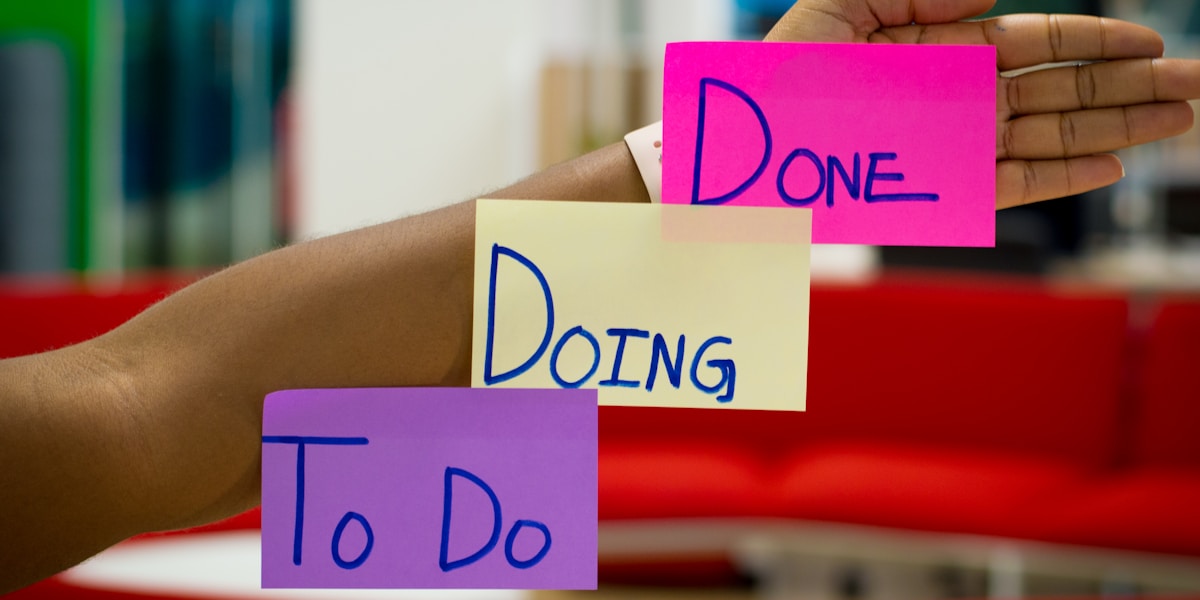How to Overcome Procrastination with Habits
Procrastination isn't laziness—it's a habit loop of avoiding discomfort. Learn how to rewire your brain to choose action over delay with 5 science-backed strategies.

You sit down to work. The task is simple. Yet somehow, your brain whispers, “Check Instagram first… maybe make a snack… maybe tomorrow instead.”
Sound familiar? That’s procrastination. It’s not laziness—it’s a habit loop of avoiding discomfort. The good news? Just as procrastination is a habit, so is productivity. And you can retrain your brain to choose action over delay.
Why We Procrastinate
Procrastination isn’t a time problem—it’s an emotion problem.
We delay tasks because they feel:
Too overwhelming 🌀 → The task seems bigger than our current capacity
Too boring 😴 → Our brain seeks more stimulating activities
Too uncertain 🤔 → We don’t know where to start or how to proceed
Your brain chases short-term comfort (scrolling, snacking, distractions) instead of long-term rewards. This is called temporal discounting—we value immediate gratification more than future benefits.
The trick is to use habits to bridge the gap between intention and action.
The Neuroscience of Procrastination
Understanding what happens in your brain helps you fight back more effectively:
The Limbic System (emotional brain) wants immediate pleasure and avoids discomfort. When you see a challenging task, it triggers stress.
The Prefrontal Cortex (rational brain) knows what you should do but gets overwhelmed by the limbic system’s emotional response.
The Solution: Habits bypass this internal conflict by making productive actions automatic, reducing the emotional resistance that leads to procrastination.
5 Science-Backed Habits to Beat Procrastination
1. The 2-Minute Rule
The Strategy: Commit to doing a task for just 2 minutes. Often, starting is the hardest part. Once you begin, momentum carries you forward.
Why it works: This technique reduces the emotional resistance to starting. Your brain doesn’t fear a 2-minute commitment, so it’s easier to bypass the procrastination response.
Examples:
- Write just one paragraph instead of a whole report
- Do 2 minutes of exercise instead of a full workout
- Organize one drawer instead of the entire room
2. Habit Pairing (Implementation Intentions)
The Strategy: Link a task you procrastinate on with something you already do consistently.
Formula: “After I [existing habit], I will [new habit/task]”
Examples:
- After I pour my coffee → I’ll open my laptop and write one sentence
- After I brush my teeth → I’ll review my top 3 priorities for the day
- After I eat lunch → I’ll tackle the most important item on my to-do list
Research backing: Studies show implementation intentions increase follow-through by up to 300%.
3. Daily Planning Ritual
The Strategy: Each evening, write down your top 3 priorities for tomorrow. This removes decision fatigue in the morning and sets you up to act.
Why it’s powerful:
- Reduces cognitive load the next day
- Creates psychological commitment to specific tasks
- Prevents aimless browsing when you start work
Pro tip: Make your priorities specific and actionable:
- ❌ “Work on presentation”
- ✅ “Write introduction and outline for sales presentation”
4. Time-Boxing (The Pomodoro Technique)
The Strategy: Work in focused 25-minute sprints, followed by 5-minute breaks. After 4 cycles, take a longer 15-30 minute break.
Why it defeats procrastination:
- Finite time periods feel manageable
- Built-in breaks prevent mental fatigue
- Creates urgency that promotes focus
Advanced tip: Track which tasks you complete during each Pomodoro session. This creates a record of productivity that motivates future action.
5. Track Your Wins (Visual Progress Tracking)
The Strategy: Mark progress visually—every completed task is an “X” on the calendar. Seeing streaks builds motivation and reduces the urge to push things off.
The psychology: Visual progress tracking leverages several powerful motivators:
- Loss aversion - you don’t want to break a streak
- Variable rewards - each completed task feels like a small win
- Identity reinforcement - you see yourself as someone who gets things done
📱 Apps like habitX make this effortless—you log your actions daily and watch procrastination shrink as consistency grows.
Advanced Anti-Procrastination Strategies
The “Swiss Cheese” Method
Break large projects into random small tasks you can do in any order. This creates multiple entry points and reduces overwhelm.
Environment Design
Remove friction from good behaviors and add friction to bad ones:
- Keep your phone in another room while working
- Prepare your workspace the night before
- Use website blockers during focus time
Energy Management
Schedule challenging tasks during your peak energy hours (usually morning for most people). Save routine tasks for low-energy periods.
Real-Life Success Story: From Delay to Discipline
Take Sarah, for example. She used to delay workouts until “tomorrow.” But when she created a rule to just put on her running shoes each morning, something changed.
She tracked her streaks, celebrated small wins, and soon—tomorrow became today.
Sarah’s habit stack:
- After I brush my teeth → I will put on running shoes
- After I put on running shoes → I will step outside for 2 minutes
- After I step outside → I will walk to the end of the driveway
- After I reach the driveway → I will usually keep going
Procrastination didn’t vanish overnight. But through habits, she built resilience and momentum. You can too.
The Connection to Other Productive Habits
Overcoming procrastination works best when combined with other productivity habits:
- Morning routines create momentum from the start of your day
- Daily planning removes decision fatigue
- Mindfulness practices help you notice procrastination patterns without judgment
Frequently Asked Questions
How long does it take to stop procrastinating?
It depends, but research shows habits form in about 21–66 days. The key is consistency, not speed. Most people see significant improvement in their procrastination patterns within 2-3 weeks of implementing these strategies.
What if I keep failing and breaking my streaks?
That’s normal. Habits aren’t about perfection—they’re about persistence. Log the miss, analyze what caused it, and start fresh tomorrow. Each restart strengthens your resilience.
Do small habits really matter for big procrastination problems?
Absolutely. Small wins compound into big changes. Overcoming procrastination isn’t about giant leaps—it’s about consistent steps. A 2-minute habit done daily creates more change than a 2-hour effort done once.
Is procrastination always bad?
Not necessarily. Sometimes “procrastination” is your brain telling you a task isn’t aligned with your values or priorities. But chronic avoidance of important tasks requires intervention.
How do I know if these strategies are working?
Track both behaviors and feelings:
- Are you starting tasks sooner?
- Do you feel less anxiety about your to-do list?
- Are you completing more tasks by the end of each day?
Common Procrastination Triggers (and How to Handle Them)
Perfectionism → Use the “good enough” standard for first drafts Fear of failure → Reframe tasks as experiments, not tests Lack of energy → Schedule demanding tasks during peak hours Unclear expectations → Break vague goals into specific, actionable steps Too many options → Limit choices and create decision frameworks
Take Action Today
Procrastination is a habit—but so is action. With the right daily practices, you can rewire your brain to choose progress over delay.
The irony of reading about procrastination is that it can become another form of procrastination. So here’s your challenge:
Pick ONE strategy from this post and implement it today.
Don’t wait until tomorrow. Don’t plan to start “next week.” Choose action over delay, right now.
Ready to build momentum and break the procrastination cycle? Download habitX for iOS and start tracking your productivity habits today.
Transform your brain from avoidance to action—one habit at a time.

